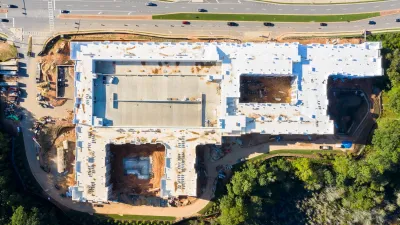The population of white people in Atlanta is growing larger by the day, a demographic shift many say is bringing about major changes in the city. This article from Governing says other cities are seeing similar trends.
"There is really only one way to put it: Atlanta is becoming whiter, and at a pace that outstrips the rest of the nation. The white share of the city's population, says Brookings Institution demographer William Frey, grew faster between 2000 and 2006 than that of any other U.S. city. It increased from 31 percent in 2000 to 35 percent in 2006, a numeric gain of 26,000, more than double the increase between 1990 and 2000. The trend seems to be gathering strength with each passing year. Only Washington, D.C., saw a comparable increase in white population share during those years, although several other big cities are starting to see it now."
"This development is occurring at the same time that race and ethnicity are driving changes every bit as fundamental in Atlanta's suburbs. For if the city itself is growing whiter, the Atlanta region is growing less white. The Atlanta Regional Commission reports that in 2000, the white, non-Hispanic population of the 20-county Atlanta metro region formed 60 percent of the total population; by 2006, that had shrunk to 54 percent, not so much because whites were leaving - although four counties did see absolute declines in white numbers - but because of the arrival in the suburbs of African Americans, Hispanics, Asians, Africans and Caribbeans. Of the 10 counties in the nation with the largest declines in white percentage of the population from 2000 to 2006, six are in the suburbs of Atlanta."
FULL STORY: Atlanta and the Urban Future

Planetizen Federal Action Tracker
A weekly monitor of how Trump’s orders and actions are impacting planners and planning in America.

Chicago’s Ghost Rails
Just beneath the surface of the modern city lie the remnants of its expansive early 20th-century streetcar system.

San Antonio and Austin are Fusing Into one Massive Megaregion
The region spanning the two central Texas cities is growing fast, posing challenges for local infrastructure and water supplies.

Since Zion's Shuttles Went Electric “The Smog is Gone”
Visitors to Zion National Park can enjoy the canyon via the nation’s first fully electric park shuttle system.

Trump Distributing DOT Safety Funds at 1/10 Rate of Biden
Funds for Safe Streets and other transportation safety and equity programs are being held up by administrative reviews and conflicts with the Trump administration’s priorities.

German Cities Subsidize Taxis for Women Amid Wave of Violence
Free or low-cost taxi rides can help women navigate cities more safely, but critics say the programs don't address the root causes of violence against women.
Urban Design for Planners 1: Software Tools
This six-course series explores essential urban design concepts using open source software and equips planners with the tools they need to participate fully in the urban design process.
Planning for Universal Design
Learn the tools for implementing Universal Design in planning regulations.
planning NEXT
Appalachian Highlands Housing Partners
Mpact (founded as Rail~Volution)
City of Camden Redevelopment Agency
City of Astoria
City of Portland
City of Laramie





























